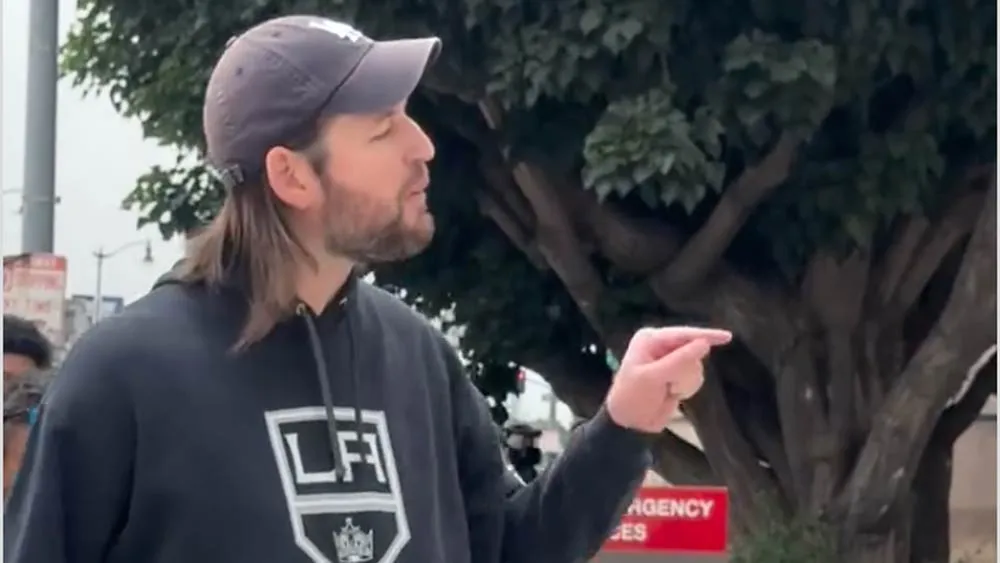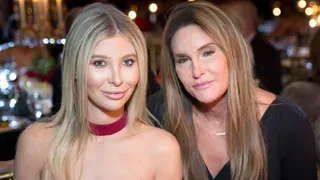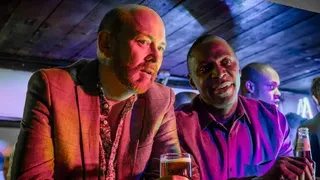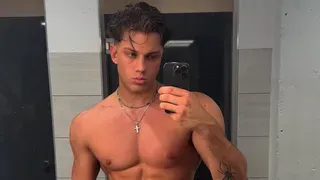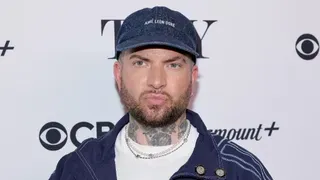December 26, 2023
All About Barry Keoghan's Cocky 'Saltburn' Dance
READ TIME: 4 MIN.
Spoiler alert: At the end of Emerald Fennell's darkly seductive thriller "Saltburn," two things remain intact – the mansion that bears the film's title and Barry Keoghan's calculating Oliver Quick. In the film's final moments, he celebrates his triumph over the aristocratic owners of the manor – The Cattons –by dancing nude through its many rooms. The shot repeats in reverse a walk the meek Oliver had with hunky Felix Catton (Jacob Elordi) when he arrived at the estate.
The final scene came about when writer/director Emerald Fennell decided to replace the initial ending, which had a dressed Keoghan at breakfast where he was served runny eggs – a reference to an earlier scene. But Fennell didn't think it had the intensity she wanted to end the film, in which Oliver becomes the most engaging anti-hero since Patricia Highsmith's Tom Ripley.
"A walkthrough didn't have that post-coital triumph. If we all did our job correctly, you are on Oliver's side," Fennell told Entertainment Weekly. "You don't care what he does, you want him to do it. You are both completely repulsed and sort of on his side. It's that kind of dance with the devil. It's like, 'F---. Okay, let's go.' And so at the end, it needed to have a triumph, a post-coital win, a desecration."
The Oscar-nominated Keoghan was game at Fennell's suggestion that he dance nude to the house to Sophie Ellis-Bextor's "Murder on the Dance Floor."
"It totally felt right." He adds, "It's ownership. This is my place. It's full confidence in, 'I can do what I want in this manor. I can strip to my barest and waltz around because this is mine.' Yeah... it was fun."
And in a quick interview with IndieWire, he punned about the scene. "It was made comfortable for me to enjoy that... to enjoy these things. After the first take, it was easy.... being cocky. Yeah. After the first take it was easy."
Fennell shot the scene with one long steady cam take with the help of "Elvis" choreographer Polly Bennett, who used Keoghan's boxing experience to "choreograph the dance so that it felt like an act of spontaneous joy, but not so chaotic that it would be too difficult for us to follow Oliver from a practical point of view," explained Fennell.
"It's a dance of extreme ownership," Bennett told Vulture, describing the moment and what it signifies at the end of the film. "He's waking from a bed that isn't his, in a house that isn't his, and moving naked through corridors that aren't his. He's shed the veneers and this is who he actually is, in his full, non-regretful body."
According to EW, one thing that was not added to his body was a prosthetic penis, which is seen towards the end of the shot. (And, yes, Keoghan is endowed).
"He's a lovely mover in the sense that he's very athletic and sporty, so he understands his body in a sports way," Bennett continued. "There's quite a narrative to what he's doing: He's going to the door, he's pulling back, he's seeing the room, he looks at the family photographs as he passes... All of these things were put in so that he wasn't having to be a professional dancer going down the hallway; it felt more like a groove, like you do when you've got music playing and you're carefree."
For the most of the dance, he is shot from behind, so as not to turn it into a "Full Monty" moment, though Bennett added: "I did have to take out a couple of turns and spins I had put in because it showed just a little too much of the wrong thing in motion, which may have distracted the audience from the root message and reason of the dance."
While explaining that Bennett made him feel comfortable on the set, Keoghan admitted to a little initial reluctance to the naked dance. "The initial thing was about me having no clothes on. I'm a bit, ehhh," he told EW. "But after take one, I was ready to go. I was like, 'Let's go again. Let's go again.' You kind of forget, because there's such a comfortable environment created, and it gives you that license to go, 'All right, this is about the story now.'"
Eleven takes later, Fennell had her shot. The director noted that the seventh take was perfect from a technical standpoint – but that wasn't the sort of perfection she was looking for, which was what she called an "absolutely devilish joy".
Keough carried on to help ensure Fennell got what she wanted. "Barry, to his credit, did it four more times until the one that you see, which has this total f---ing evil joie de vivre that is impossible not to be on board with," the Oscar-winning screenwriter said.
For his part, Keoghan added, "I didn't know I could dance like that, by the way. I was like, 'Wow. Where did them things come from?' Do ya know what I mean?"
